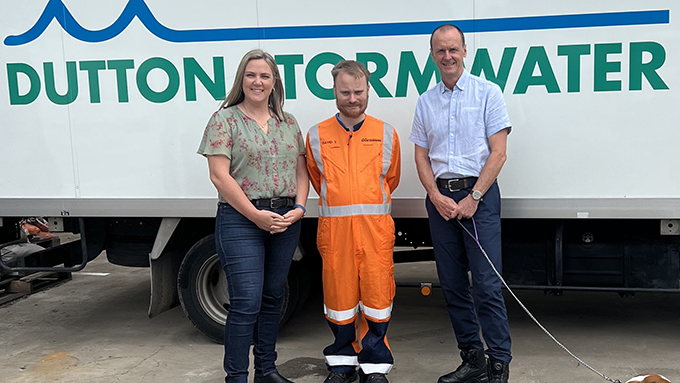Pete Mercer examines the evolution of mentoring programmes and how adapting the conventional mentor-mentee configuration can lead to better outcomes from an inclusion perspective.
When it comes to realising the full potential of their people, employers have many tools in their kete. From leadership development programmes to recognition schemes and network groups to internal mobility and rotation opportunities, the options are plentiful.
Yet beneath the promise of each initiative lies a hidden common challenge: the risk of perpetuating, rather than tackling, inequities and power imbalances by failing to identify and address them in the accessibility, design and delivery of the initiatives themselves.
One prominent initiative used to support people’s careers is mentoring - or āwhinatanga (interpersonal care) - a thoroughly tried and tested model for relationship-based growth and development.
The potential benefits of professional mentoring programmes can be extensive, including enhanced career development outcomes, increased staff retention, commitment and satisfaction, and improved organisational climate.
But how effectively do mentoring programmes achieve these goals from a diversity, equity and inclusion (DEI) perspective?
Research has indicated that they can support positive outcomes in terms of addressing under-representation, inequities and marginalisation, among other potential benefits (such as building empathy and intercultural capability). For example, a US study from the Harvard Business Review found that “formal mentoring programmes within organisations boosted minority and female representation in management on average by nine to 24 per cent.”
Is this necessarily the case, though? Are there any limitations of mentoring initiatives? And do they always have such impact for all diverse groups?
One potential pitfall of traditional mentoring lies in the tacit implication that mentees merely need to adopt the wisdom and guidance of mentors to navigate their development path. Such a dynamic can lead to pressure to assimilate and the feeling that they should just “be a bit more like the mentor” to succeed, suggesting the barriers to progression lie within the mentee themselves, rather than in their environment. This demonstrates little regard for differences in background, identity and lived experiences.
Organisations striving to overcome this tendency have responded by conceptually reshaping established development initiatives through a DEI lens - including making adaptations to the conventional mentor-mentee configuration.
Such an evolution can be found in the emergence of diversity mentoring schemes, which aim to address specific talent pipeline inequities. Take the TechWomen’s Mentoring Circles initiative, for example, which focuses on supporting women working in technology, highlighting the approximate 30 per cent female representation within the sector and the need for addressing evident gender inequity.
Other variants we have seen include reverse mentoring, where employees from non-dominant or under-represented groups offer their perspectives to colleagues in positions of power or influence, and mutual or reciprocal mentoring, a collaborative and two-way exchange of knowledge and support.
While the concept of reverse mentoring has been around for a long time, some argue that the rapidly changing face of work (the jobs that exist and the working practices that support them) and the ever-expanding age range of our workforces mean that the perks of reverse mentoring are increasingly salient.
A blog written for HR software company Employment Hero suggests the fact that reverse mentors are often younger than their senior mentees offers inherent age inclusion and social cohesion benefits. “Reverse mentoring can help to bring a multigenerational workforce together and achieve intergenerational awareness, which is especially important as we now have four generations of employees across nearly 70 years of experience in the workplace.”
Just one of a suite of initiatives designed to address underemployment of disabled people, New Zealand Disability Employment Network’s Rise to Success mentoring programme aims to be mutually beneficial. Mentees gain access to invaluable guidance, support and mentorship from experienced professionals, who in turn gain a deeper understanding of disability and inclusivity in the workplace.
Meanwhile, some organisations have discovered inclusion gains when mentoring is integrated with other learning mechanisms. In partnership with the Ministry for Pacific Peoples in 2022-23, the Leadership Development Centre of Te Kawa Mataaho Public Service Commission ran the Public Service Pacific Mentoring Programme. The nine-month programme, matching senior Pacific leaders with aspiring Pacific public servants, aimed to empower and maximise their skills and potential. The blended programme included five facilitated virtual workshops with mentees and mentors and reflective journaling for mentees alongside one-on-one mentoring sessions.
The ministry’s programme was based on four culturally aligned principles: reciprocity, service, collectivism and family. This highlights a more fundamental consideration for employers, which is the kaupapa (philosophy) that drives a programme: its founding values and principles, and the cultural lens used when establishing them.
In a business world often gripped by corporate models imported from overseas, it might be easy for organisations to default to programme design through a mono-cultural (Western dominant) worldview. But to do so is to disregard rich cultural perspectives and frameworks that are inherently adept for inclusive and equitable mentoring, and to potentially disenfranchise many of those they are seeking to empower in the process.
By contrast, Tātai Aho Rau Core Education offers a coaching and mentoring service - He Waka Unua - as part of its education and workplace development services. Each of their kaiārahi (coaches and mentors) are committed to realising a person’s potential by following a set of te ao Māori principles, such as kaitiakitanga - nurturing and protecting growth guided by a code of ethics.
Exploring mentoring programmes through an intercultural lens reveals another aspect that can present limitations: the sometimes individualistic and linear nature of a relationship from which only the mentee (and possibly the mentor) benefits.
Again, there are examples that demonstrate organisations transcending this concern. The mentoring programme developed by the Ministry for Social Development (MSD) Te Manatū Whakahiato Ora was defined as “growth through partnership”, focusing on employee-led network groups for collective participation. The groups take the core programme, overlay their cultural and other considerations, and drive the programme to meet their diverse needs.
When a workplace’s mentoring programme prioritises the needs of individuals over those of a wider community, it risks overlooking the broader systemic changes required to enable not just that individual’s success but also that of anyone who is obstructed by the same environmental barriers. MSD found that their approach enabled bottom-up change within the organisation and that solutions that came from the community were stronger and more sustainable.
Whether organised through employee network groups, action learning sets or otherwise, those coming together to affect real change in workplaces can really benefit from mentoring programmes. That said, even collective advocacy can be frustrated by the power imbalance inherent in employment hierarchies. For this reason, some organisations have consciously pivoted their focus towards the concept of sponsorship
A sponsor is someone (usually with seniority) who can use their power, position and influence to deconstruct barriers and advocate for someone from an underrepresented group, by celebrating their skills and achievements, enabling access to development opportunities, and holding themselves and others accountable for broader DEI commitment.
Joanne Lu, who participated in Deloitte’s Women in Leadership sponsorship programme, reflected: “I am both a reserved person, who doesn’t like to promote myself, as well as working in an industry that is highly male-dominated. It was great to have sponsors that gave me the opportunities to raise my profile, stretch out of my comfort zone, and advocate for the work that I deliver.”
Of course, sponsorship programmes can be vulnerable to some of the same limitations as mentoring programmes. For instance, sponsorship can be individualistic by design too; but it needn’t be. Senior sponsorship is increasingly being applied to support entire employee-led network groups, as reflected in many of the network group structures of Te Kawa Mataaho Public Service Commission, ANZ and Fletcher Building, to name just a few.
There is no “one size fits all” here: the initiatives that employers implement and how they are configured must serve their own needs, priorities and organisational climate. But being mindful of equity and power dynamics is particularly important during such times of precarious employment, wherein those from marginalised groups may feel increased pressure to demonstrate their “worth” in ways that aren’t their authentic own.
Download the August 2024 digital edition of Taura magazine




